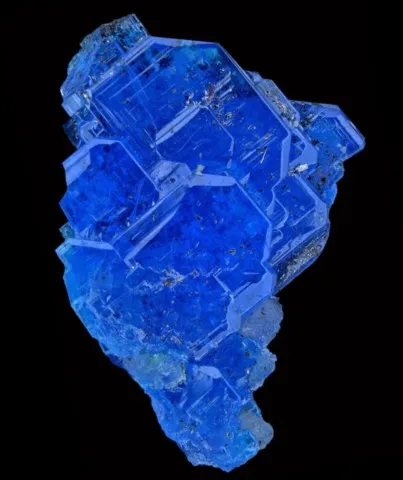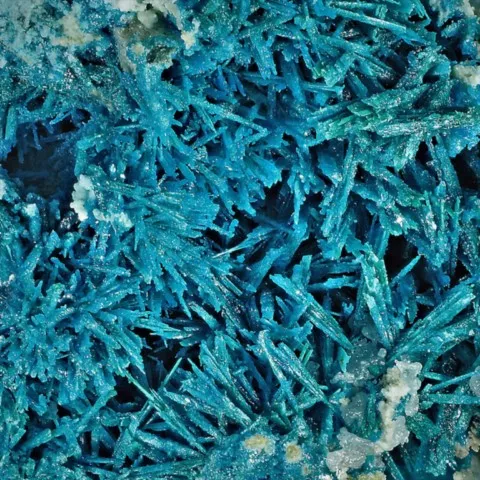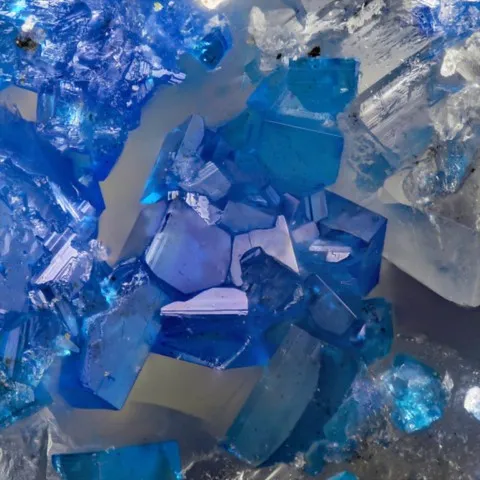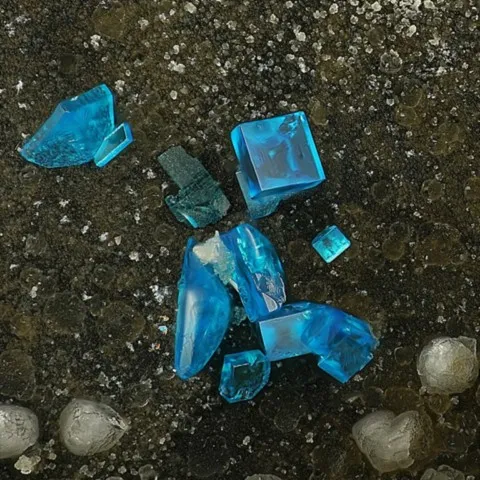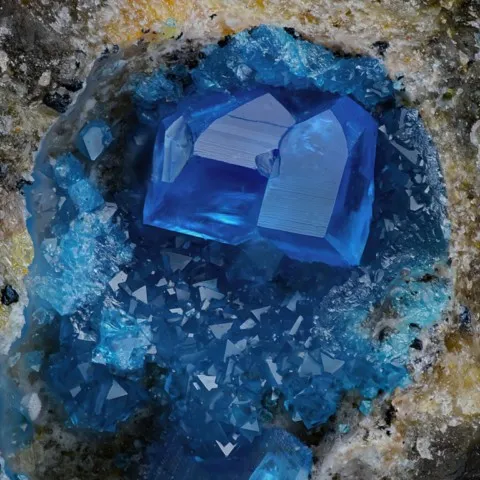DIABOLEITE
Class : Halides
Subclass : Oxychlorides
Crystal system : Tetragonal
Chemistry : Pb2CuCl2(OH)4
Rarity : Rare
Diaboleite is a rare secondary mineral from lead and copper deposits, typical of arid climates in chlorinated environments (closed lagoons, evaporitic basins and marine coastlines). It is also found in certain slags in neoformation. It is associated with other secondary lead minerals (cerussite, phosgenite, etc...) and very frequently with boleite. Its name comes from the Greek dia (distinct from) and boleite. It occurs in tabular crystals on {001}, with a square or octagonal silhouette, 2 cm maximum, commonly constituting subparallel aggregates of fine lamellae, of a deep blue reminiscent of boleite. it is also massive, in blue coatings or inlays.
Main photo : Diaboleite from Mammoth St. Anthony, Arizona, USA © Dan Polhemus
Diabolite in the World
Twinning
A twin is known on {010}.
Fakes and treatments
No fakes listed for this mineral species.
Hardness : 2.5
Density : 5.41 to 5.43
Fracture : Conchoidal
Streak : Blue
TP : Transparent
RI : 1.850 to 1.980
Birefringence : 0.130
Optical character : Uniaxial -
Pleochroism : Visible
Fluorescence : None
Solubility : Nitric acid
Magnetism : None
Radioactivity : None

